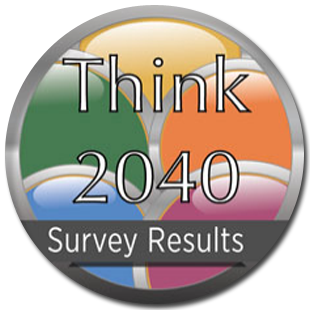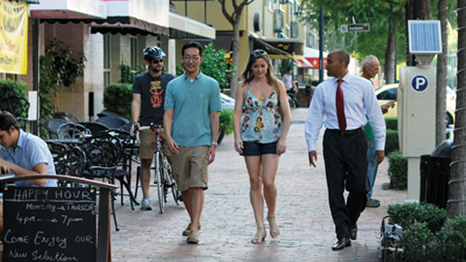Great Region 2040 Think 2040 Survey
Used to help develop and prioritize the strategies in Our Great Region 2040, the Think 2040 survey gauged public opinion on different aspects of our region's future. More than 8,000 residents from all 13 counties in our region took part in the survey.
Download
Survey Questions
Survey Results Summary
Survey Results Presentation (7-17-2013)
Think 2040 Survey Highlights
The Think 2040 survey, administered in the fall of 2012, was an online survey that asked for the public's input about the future of our region. Three alternative futures were presented that explored ways in which our region may grow, how we may get around, and how we may maintain or create strong competitive communities as we plan for the year 2040. The three alternatives were compared with a projection of how our region might look if no changes are made and we stay on the current course.
Less Time on the Road: This alternative promoted more growth in existing communities where infrastructure and services already exist. Learn more.
- Reduction in travel times, costs
- More jobs and housing located closer together
- Some new housing is smaller sized, in walkable areas
- More investment in sidewalks, bikeways, public transportation
- Better air quality
Greener Region: This alternative preserved high-quality natural areas in our region through public and private efforts, resulting in a reduction in air and water pollution. Learn more.
- Development reduced in flood and storm surge vulnerable areas
- Best natural areas preserved
- New businesses, workers, tourists attracted by natural areas
- Greener practices adopted by local governments
Competitive Workforce: This alternative focused on increasing the educational attainment of our region's residents by improving schools as well as addressing community factors such as poverty, crime, and substandard housing. Learn more.
- Highly skilled workforce
- Competitive economic region
- Good jobs and job training opportunities
Current Course: As a baseline when thinking about these three alternative futures, respondents considered the Current Course, or what the future may look like if we don't make any changes to our current growth, environmental, and educational trends. Learn more.





